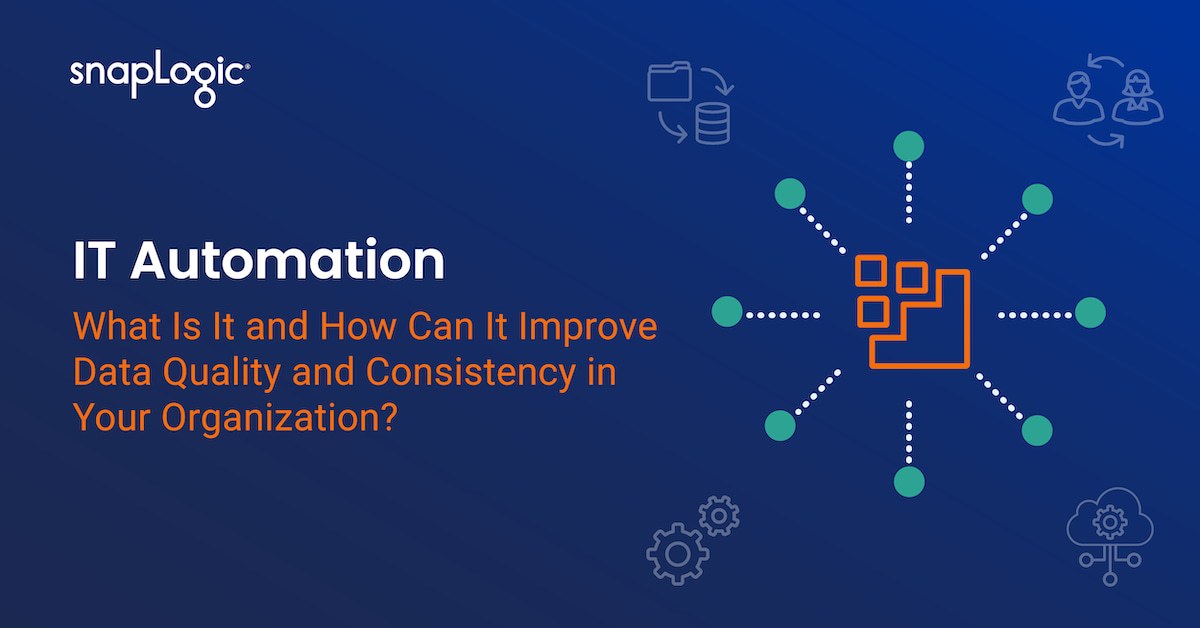Originally published on data-economy.com.
Artificial Intelligence has been around for decades, however, only in the past ten years, it has deeply penetrated the enterprise layer with a wave of new applications.
João Marques Lima speaks to Dr. Greg Benson, Professor of Computer Science and Chief Scientist at SnapLogic to find out how AI, and in particular, machine learning is changing businesses worldwide.
The global Machine Learning (ML) market was valued at around $1.58 billion in 2017 and is expected to reach approximately $20.83 billion in 2024, growing at a CAGR of 44.06% between 2017 and 2024, according to Zion Market Research.
Machine Learning is an application of artificial intelligence that enables software applications for being more precise in predicting results without being definitively programmed.
Many of the artificial intelligence experts have projected their idea that by 2050 all the intellectual tasks performed by the humans can be accomplished by the artificial intelligence technology.
Common applications to Machine Learning technology are financial services, healthcare, government, marketing and sales, transportation, oil and gas, manufacturing, bioinformatics, computational anatomy, and more.
The market uptake of such technology is sparking as much fear as opportunity, and even governments are quickly taking action to take united and collaborative decisions on how we should use AI in today’s and tomorrow’s society.
The most recent example is the creation of the Global Partnership for AI, founded by French president Emmanuel Macron and Canadian prime minister Justin Trudeau.
As the world wakes up to the opportunities – and possible difficulties ahead, SnapLogic’s Dr. Benson discusses the impact on companies.
What are the barriers for firms when it comes to ML adoption?
There are several major barriers that firms face when it comes to adopting Machine Learning, not least that the Machine Learning process can seem daunting for many organizations due to its unpredictable and experimental nature. Many organizations struggle to understand what is required to undertake Machine Learning.
When IT teams initially start going through the data to deploy Machine Learning algorithms, most probably won’t know the type of data that is required, so a lot of exploration must to be done before IT and business decision-makers have an idea of what data will be useful, and which Machine Learning algorithms will work best to solve a particular problem.
For example, pretty much all businesses have policies that limit access to certain information by specific departments or employees, but what they need to understand is that Machine Learning is fuelled by all sorts of data.
Therefore, providing access to that data for the algorithms to utilize can be a crucial step to doing any form of Machine Learning.
Other technical challenges include being able to automate data access. When organizations have formulated clear policies that allow easy access to real-time data, they need to consider how to set up a channel or a pipeline in order to access the data.
Organizations also need to ensure that there is availability of constant real-time data. Machine Learning models should not be trained on a single fixed set of data, so organizations need to set them up so that they can retrain their models to adapt to the changing behavior of the data and the systems that they’re working with. Additionally, there is, of course, a major talent shortage problem.
How can these barriers be overcome?
There are concerns about access to certain types of data, particularly when you have different groups of employees or other stakeholders coming in at different times to work on projects.
So organizations should consider filtering out any potentially sensitive information from the data first so that the rest can be used to deploy Machine Learning algorithms.
Another issue to overcome is how to fulfill the demand for data scientists.
While it’s great to see that there are more data scientists emerging in the workplace, a lot of time still goes into training them, so supply is still not keeping up with the rising demand.
But what we’re starting to see is that more and more people who have been trained in other areas, such as senior business analysts and software engineers, are increasingly expanding their knowledge of data science and Machine Learning, which can help bridge that gap.
Since Machine Learning is, effectively, software, this is going to be an area that many software engineers already have some familiarity with. They can also train themselves with the huge amounts of material and resources that are readily available to help them get up to speed.
Additionally, organizations will have IT business analysts who have experience with handling databases, even if they’re not programmers they’re still analytically minded, so they can take advantage of Machine Learning through self-training too.
All of these developments are following a really positive trend, as tools and platforms are beginning to allow a wider range of users to engage with Machine Learning and make it useful for them.
What are the biggest misconceptions businesses have in relation to ML?
I see two main misconceptions about ML that relate to the complexity and capabilities of ML. First, businesses often think that ML is very complex and requires Ph.D.s to get value out of an ML implementation.
The reality is that there are many relatively simple ML algorithms that can be applied to business data to provide predictions or classifications.
On the other hand, there is an unrealistic conception that ML is a panacea to all business problems. The sweet spot is understanding the realistic capabilities of different, well-understood ML algorithms and match them with the right business data to derive real value.
How can companies cyber-protect themselves when using ML?
This is an active area of security research and product development in which ML can be used to identify anomalous and unwanted system behavior such as fraud, intrusion, and data theft. Security vendors offer a range of ML-powered products to detect system attacks.
Unless you are a large company with extensive resources, it will likely not be cost-effective to develop in-house ML implementations for cyber-protection.
How can businesses address the data science skills gap?
Businesses of all sizes should be working with universities or creating apprenticeship programs to bring in fresh talent.
Another way to help bridge the skills gap is for businesses to invest in technology that will lift the burden off IT professionals. Having the right data to deploy Machine Learning algorithms is an incredibly time-consuming process – a lot of time is actually spent on trying to get access and sift through huge volumes of disorganized data with manual coding, which leaves IT professionals little time to focus on higher-value tasks.
Organizations need to invest in technology that can automate data pipelines, giving all departments regular access to real-time data, and make Machine Learning processes as seamless as possible with little or no coding required.
How will businesses benefit if they invest more in emerging technologies and skills training?
Businesses can look at how investment in emerging technologies will benefit them in two ways – either to get ahead of their competition or to prevent their organization from becoming obsolete.
Businesses need to follow and even move ahead of technology trends to not only offer a better experience and more effective utilization of their resources but continue to provide the services that their users and customers expect.
For instance, many organizations still struggle with processing huge volumes of data on a large scale due to reliance on outdated technology and on-premise data systems.
So they need to invest in tools like the cloud and Machine Learning that can automate data processing to make it as seamless as possible in order to get the full use of their data.
Eventually, one way or another all organizations will need to adopt Machine Learning simply because that will become an expectation so that applications and services can better anticipate what their users are attempting to do and to provide recommendations or predictions that enable them to achieve their goals more rapidly.
This doesn’t just apply to investment in the technologies, but the skills training as well. Businesses need to ensure that people are trained well to utilize these technologies, but also continue to help expand their skill set in order to harness the full potential of these emerging technologies.









